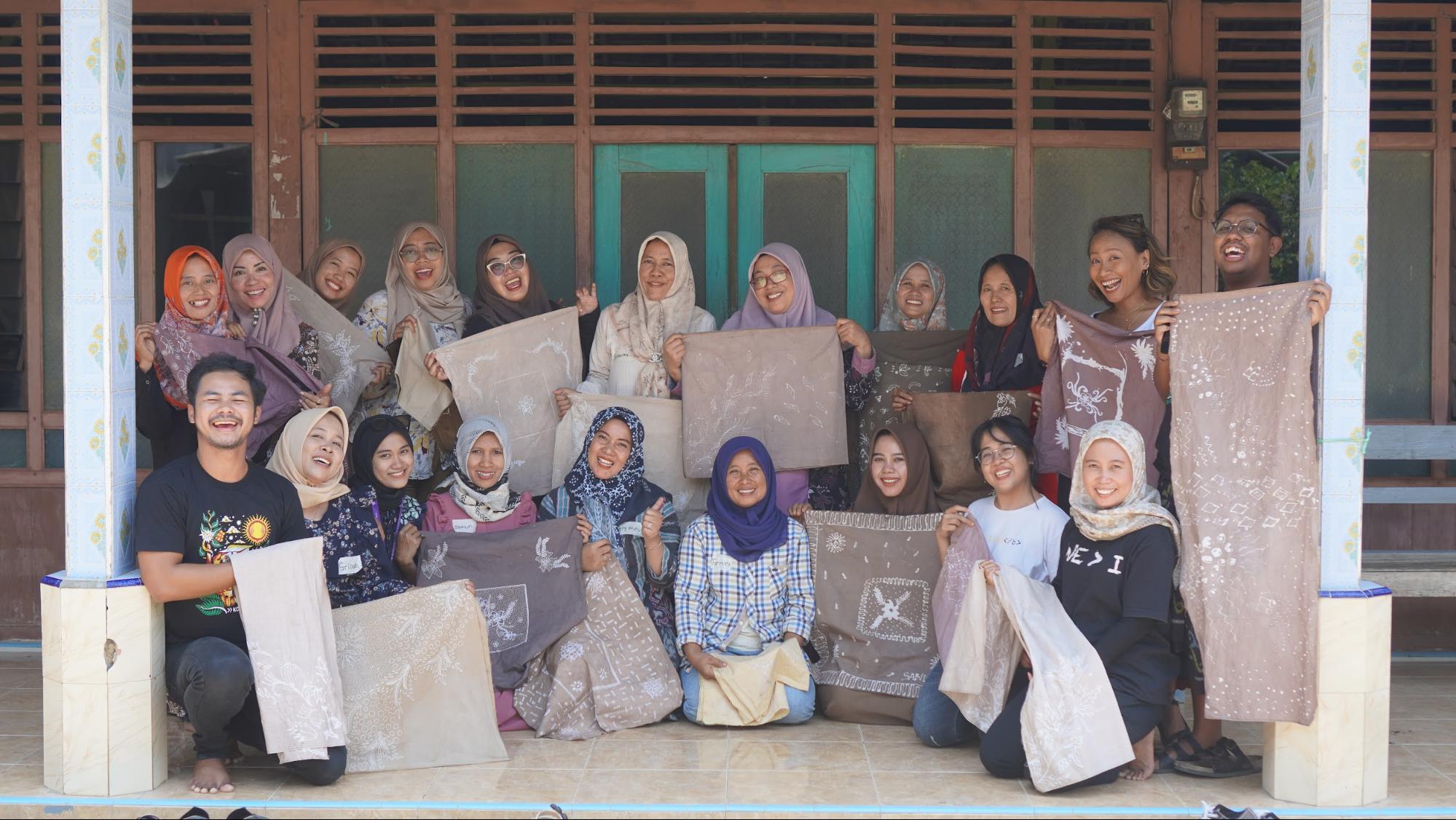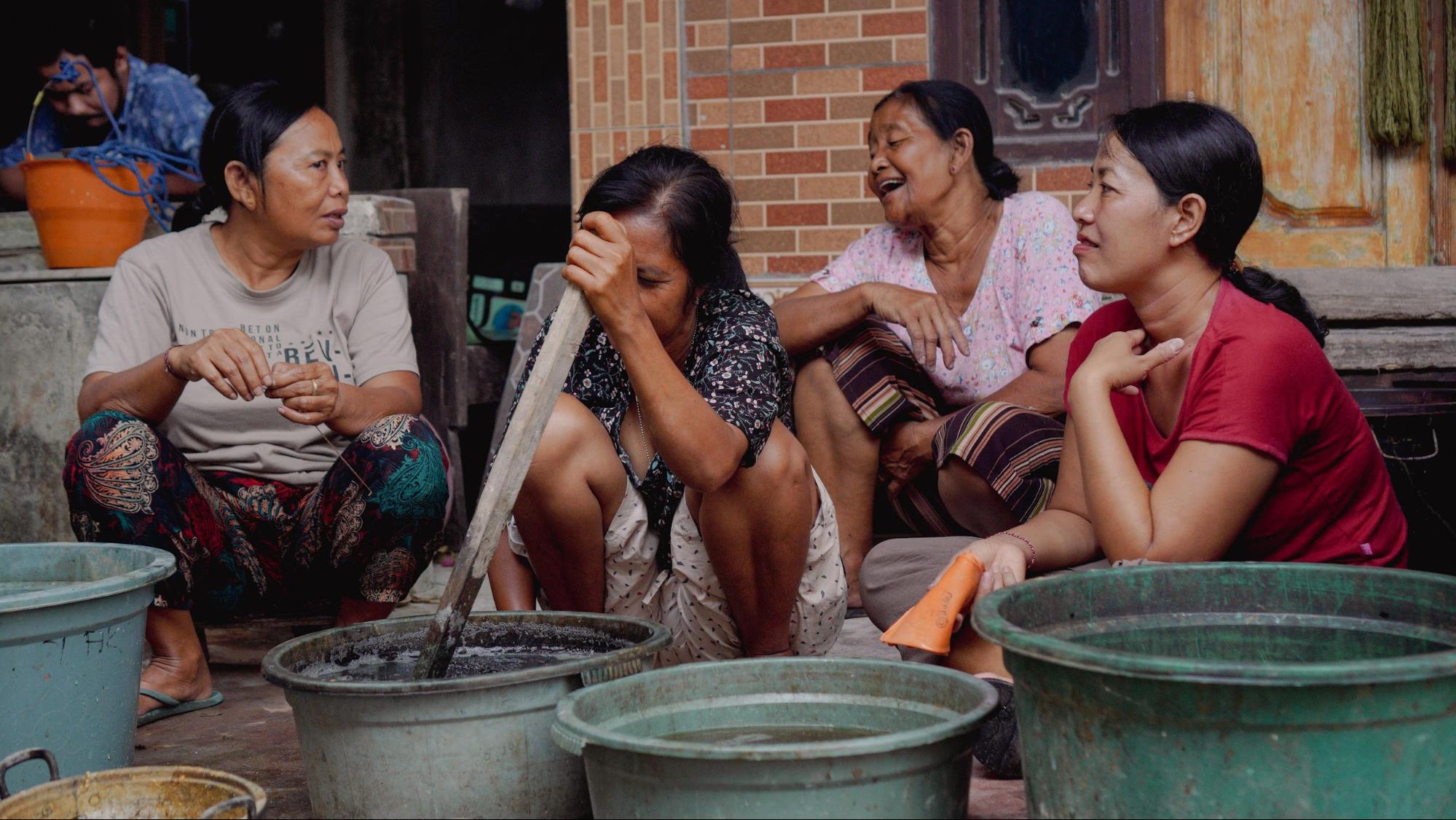Amidst the rapid pace of modernization and shifting traditions, women in Tuban, East Java, and Nusa Penida, Bali, stand as guardians of cultural authenticity. In the face of the modern and fast fashion industries, these women are upholding traditional values in the fashion production process, specifically in the creation of batik and woven fabrics. Their dedication to traditional methods and the use of natural dyes strengthens the value of their products.
Batik in Tuban
Batik has become an inseparable part of the lives of the people of Tuban, and have become an important trade commodity. Batik production in Tuban is still dominated by the traditional hand-drawing method, where artisans directly draw motifs on fabric using malam (wax), with women playing a pivotal role in driving this intricate craft. Many women in Tuban, beyond their roles as artisans, have become successful batik entrepreneurs, managing the entire business process from production and design to marketing. The Wonder Women program is helping these women embrace their entrepreneurial spirit.
To preserve traditional methods, add value to their products, and reduce the negative environmental impacts, in late 2023, the batik artisans participating in the Wonder Women program started exploring and experimenting with natural dyes, which were readily available around their homes. Together, they tested various materials and compared the effects of two different fixatives, lime and tunjung (calcium oxide). Their experiments yielded a beautiful array of subtle colors. For two days, they meticulously followed each stage of the process, from preparing the fabric and dyes, to dyeing the fabric, removing the wax, and drying the final product.
While precision and patience are essential, their creativity shines through in the batik patterns they create. Smiles lit up their faces as they succeeded in extracting beautiful colors from natural sources. This group activity ignited curiosity, prompting them to continue their individual experiments at home. Last January, they gathered to share their findings and knowledge – the new natural materials they tested, along with learnings from their processes and results.
One of the participants, Radhika, shared her experience of how during the initial experiment, she used trasekan leaves for dye with a tunjung fixation, resulting in an uneven coloring in the fabric. She then redid the process and dyed it with a concoction made from mangosteen rinds using lime and tunjung fixator, which led to a much better outcome.

The experiment of natural dyeing for batik resulted in soft and gentle hues
Weaving in Nusa Penida
Tanglad Village in Nusa Penida, Bali, is known for its weaving tradition, specifically Cepuk with its beautiful geometric patterns. Various patterns such as Cepuk Sudamala, Cepuk Liking Paku, Cepuk Kecubung, Cepuk Mekawis, and Cepuk Tangi Gede are preserved by weaving artisans for use in traditional ceremonies, while Cepuk Kurung is typically worn for daily activities.
Ni Wayan Sari, better known as Bu Luh, was first introduced to weaving when she married her husband, a native of Tanglad Village. While she is not originally from Tanglad Village, she found herself becoming deeply passionate about the artistry of Cepuk weaving. She learned the traditional weaving techniques from her mother-in-law and other women weavers in her neighborhood. Today, she has become the main driver and motivator among other women weavers in Tanglad Village to preserve the tradition – including joining the Wonder Women program.
Bu Luh, together with other women in Tanglad, continues the weaving tradition in the village. They incorporate local resources and materials into their products, utilizing the abundant natural dyes readily available in their village. They have experimented with various natural dyes, such as ketapang, mahogany, mango, noni root, horse tree, sappan wood, crisp grass, and loba, to create unique natural colors.

The women weavers in Tanglad Village dyeing the thread for weaving using natural dye materials
By utilizing locally sourced materials and natural dyes, the Wonder Women in Nusa Penida not only sustain cultural heritage and embrace nature for more sustainable practices but also strive to increase the value of Cepuk weaving and expand into more premium markets.
For these women leaders in Tuban and Nusa Penida, batik-making and weaving are more than economic pursuits. It is their way of upholding tradition, empowering their communities, and promoting sustainable practices. Through their practices, they continue the cultivation of local wisdom and empower their community in creating a climate-resilient society.


